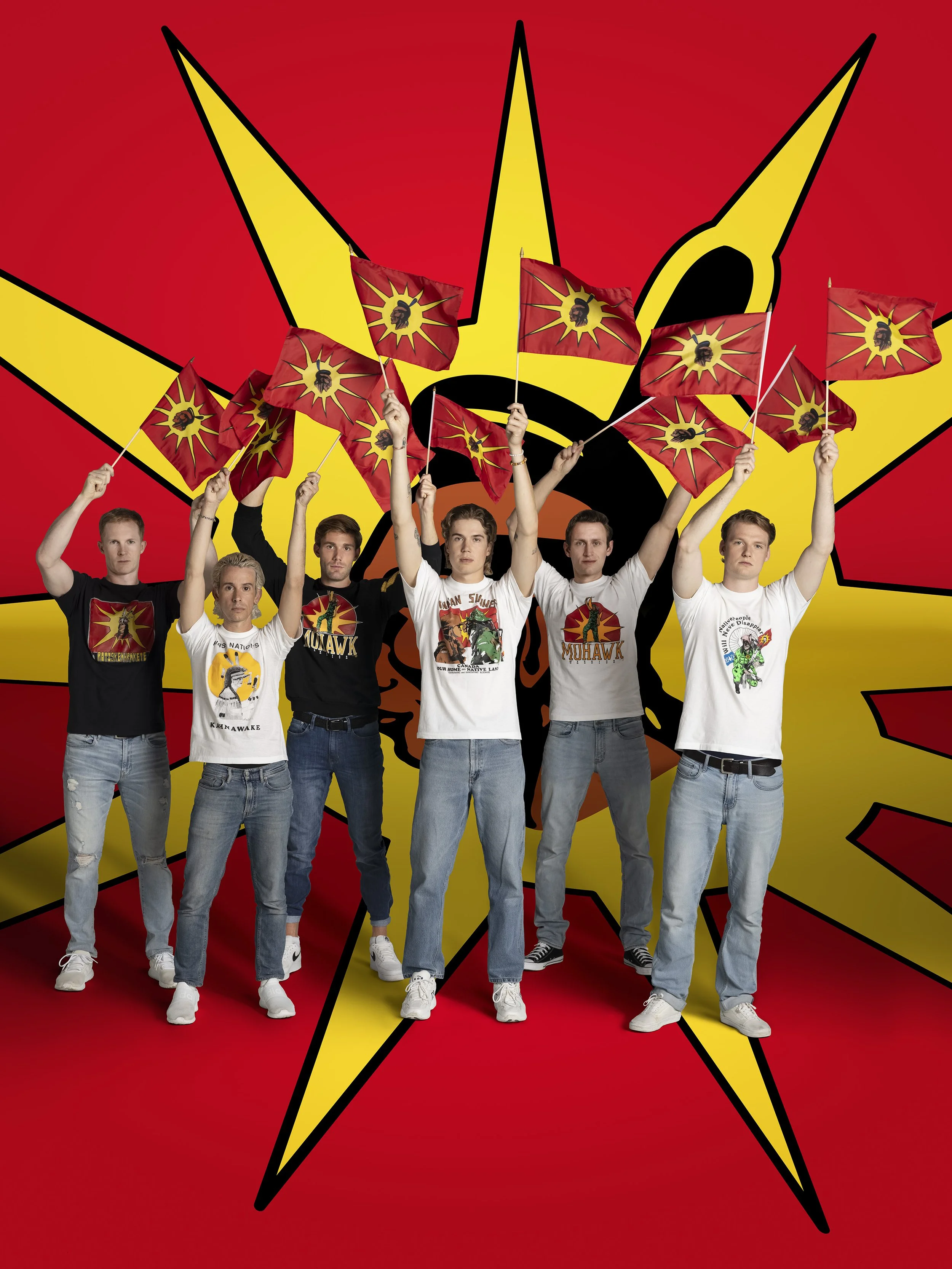Rick Erickson gifted me a collection of 8 t-shirts that he bought while visiting the Peace Camp in Oka, (September 1990) and the Sacred Run (October 1991). He travelled there with Vancouver artist and close friend Paul Wong and they took pictures which they still have today. Mohawk vendors were selling their wares, some with images of the classic Mohawk warriors silhouetted on the Mohawk flag, others with actual images from the resistance. On the one-year anniversary of the Kanesatake Resistance (Oka Crisis) there was a Sacred Run across Canada with indigenous runners and friends going to indigenous communities along the way, to check in to make sure people were ok, with the run ending in Kahnawake Mohawk Territory. When the runner was close to Kahnawake, Rick ran the last few KMs and also bought more t-shirts at this gathering.
When Rick gave me these t-shirts, immediately, I knew, felt, embodied = that I was going to make a work to pay homage to Rick. This lovely man who has supported so many Vancouver artists and arts organizations. This lovely man, who has been so generous to so many. I sat with the t-shirts and hung them in the sun, as they were stored away for 20 years. As I watched the t-shirt’s move in the wind, I remembered when Rick and Paul returned from OKA, and over the years Rick forever the handsome blonde would wear his Mohawk sweatshirt or T-shirt! As I watched the t-shirts shift and transform in the wind, the image of this new work arrived.
I would audition 6 models representing Rick and ask them about their knowledge regarding indigenous Canada. Answers varied and were all so heartfelt. I invited various art community members to witness the process and Rick, his partner Donna and Paul also attended. I also invited a few Mohawk leaders, but our timing did not line up. Although I am making art, I am also making something else, and wanted folx to witness that something else as well as the process of artmaking. I have realized these images and Rick’s actions are within the realm of allyship and in contemporary language, reconciliation.
These highly charged “political” t-shirts, worn by non-indigenous men – such a beautiful image. In the age of pretindians and non-indigenous folx afraid to wear anything indigenous – these works open a conversation. My conversations included:
While I am paying homage to Rick, I am also paying a deep homage to the Kanien’keha:ka. people. My dear friend Zoe Hopkins taught me that the Mohawk are also known as “People of the Eastern Door” and responsible for defending the eastern boundaries of the Haudenosaunee Confederacy. Zoe is a Mohawk language speaker and translated:
Resis tahnon Kanien’keha:ka – Rick and the Mohawk People.
My dear colleague and friend, artist Shelly Niro’s early 1990’s work of Mohawks in Beehives was foundational to indigenous image making, her Rebel photograph of her mother reclining on the trunk of a car wearing red shoes, is forever etched into my image bank. My own work Onto the Red Road is intrinsically influenced by this Mohawk work, as were many others artists and now generations of artists. Taiaiake Alfred, Mohawk warrior and scholar and Lawrence Paul Yuxweluptun, both brought forward how language and the objectification of indigenous people, lingers in words and how additive words like “with and for”, can shift meanings. Art is a complex matter, as is history, as is now. Perhaps that’s all we will ever know – complex matter.
Rick and the Mohawks
2025
Inkjet prints
LED firebox with transmounted lightjet duratrans
Dimensions vary.
"Rick and the Mohawks (flags)," 2025. LED firebox with transmounted lightjet duratrans. 72 x 48 inches.
"Rick and the Mohawks (selfie)," 2025. LED firebox with transmounted lightjet duratrans. 72 x 48 inches.
"Rick and the Mohawks (column)," 2025. Inkjet print. 84 x 15.75 inches.
"Rick and the Mohawks (reclined column)," 2025. Inkjet print. 19 x 95 inches.
Installation view of "Rick and the Mohawks", Macaulay + Co, Vancouver, Canada, 2025. Courtesy of Macaulay + Co. Photo: Byron Dauncey.




